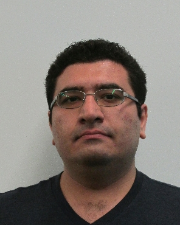
Ehsan Variani
Research Areas
Authored Publications
Sort By
Google
Multilingual Second-Pass Rescoring for Automatic Speech RecognitionSystems
Pedro Moreno Mengibar
ICASSP (2022)
On Weight Interpolation of the Hybrid Autoregressive Transducer Model
David Rybach
Interspeech 2022, Interspeech 2022 (2022) (to appear)
An Efficient Streaming Non-Recurrent On-Device End-to-End Model with Improvements to Rare-Word Modeling
Rami Botros
Ruoming Pang
David Johannes Rybach
James Qin
Quoc-Nam Le-The
Anmol Gulati
Cal Peyser
Chung-Cheng Chiu
Emmanuel Guzman
Jiahui Yu
Qiao Liang
Wei Li
Yonghui Wu
Yu Zhang
Interspeech (2021) (to appear)
Hybrid Autoregressive Transducer (HAT)
David Rybach
ICASSP 2020 - 2020 IEEE International Conference on Acoustics, Speech and Signal Processing, Barcelona, Spain, pp. 6139-6143
Acoustic Modeling for Google Home
Joe Caroselli
Kean Chin
Chanwoo Kim
Olivier Siohan
Mitchel Weintraub
Erik McDermott
INTERSPEECH 2017 (2017)
Raw Multichannel Processing Using Deep Neural Networks
Kean Chin
Chanwoo Kim
New Era for Robust Speech Recognition: Exploiting Deep Learning, Springer (2017)
